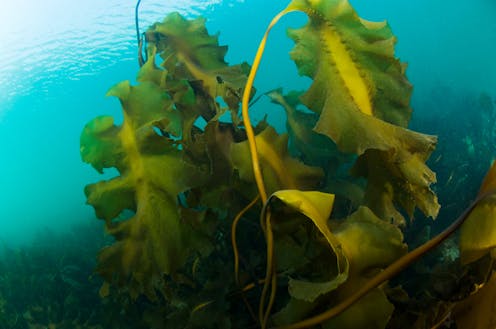
Seaweed has been part of the human diet for a long time. In Asia, its consumption is well established in culinary traditions. Think of the famous dashi, the flavourful Japanese broth.
While less known in the West, algae is a traditional food source in some coastal areas of Iceland, Ireland, France, Denmark, Norway, the United States and Canada.
About fifty types of algae are consumed worldwide. The most common varieties available commercially include nori (used for sushi), dulse, sea beans or spaghetti, sea lettuce, wakame and Atlantic wakame, sea fern, and royal kombu (sea lasagna).
Many of these seaweeds are present in the St. Lawrence River.
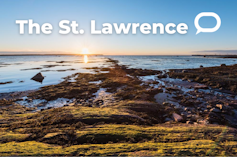
This article is part of our series, The St. Lawrence River: In depth. Don’t miss new articles on this mythical river of remarkable beauty. Our experts look at its fauna, flora and history, and the issues it faces. This series is brought to you by La Conversation.
Their abundance, versatility and quality makes this resource a real asset for Québec. An asset that absolutely must be discovered.
I have been interested in the potential of seaweed and its development in food for a dozen years. My research activities focus on the study of St. Lawrence algae and their components. Recently, our research team at Laval University’s Institute of Nutrition and Functional Foods investigated the gastronomic potential of dashi from Québec seaweed.
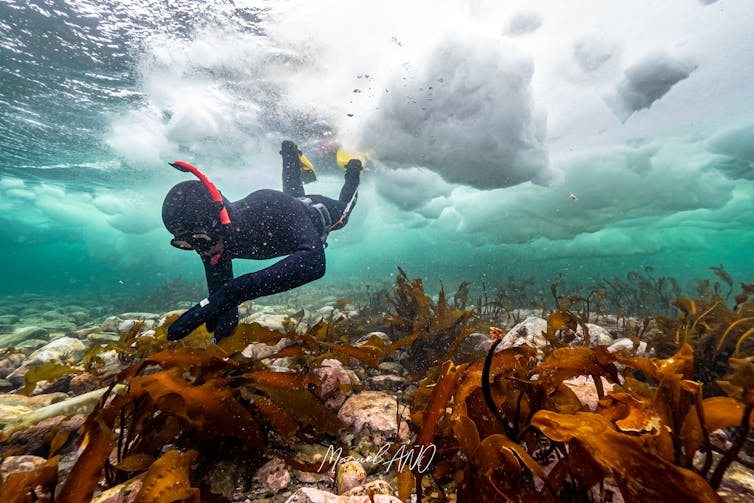
Algae from the Saint Lawrence
Large seaweed live in salt waters, on the coasts of oceans, seas and rivers. They vary greatly in size, shape and colour. Marine algae are classified by their colour according to the pigments they contain: green, brown, red.
Québec’s cold waters are favourable to their growth. Extremely low levels of pollution from industrial or urban sources in some places is an asset. Culturing activities can be conducted without problems linked to the accumulation of heavy metals or pathogenic microorganisms (which could cause disease).
With its 6,000 km of coastline, spread over the Gaspé, North Shore and Lower St. Lawrence regions, the maritime estuary and the Gulf are home to 346 species of algae. Fifteen of these are certified “Fourchette bleue” or Blue Fork 2022, a Québec certification that aims to introduce new marine products to the public while also supporting sustainable use of the resource.
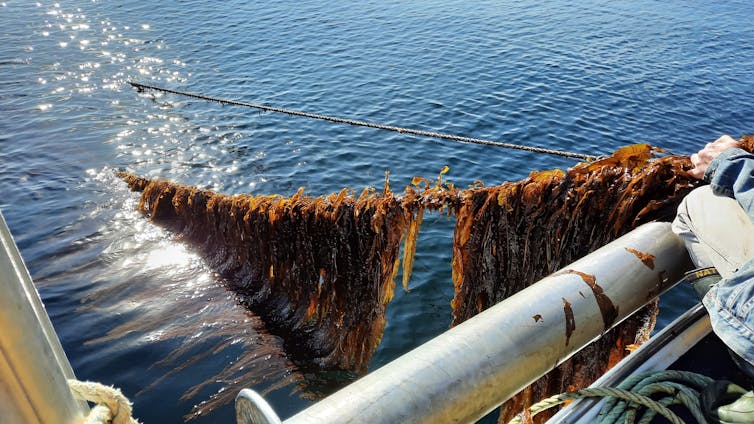
Seaweed is available in different forms, either fresh, dried, blanched, frozen, in flakes or spices, and sometimes already processed (ready-to-eat like pesto, relish, tartar mixture). The integration of St. Lawrence algae into common products such as salad dressings, bread, beer, chocolate, cheese, yogurt, salt and spices, for example in the Gaspé or the Lower St. Lawrence, is becoming increasingly popular.
In restaurants, chefs are also mastering Québec’s seaweed: it encourages them to revisit traditional recipes and break new culinary grounds.
The health benefits of seaweed
These sea vegetables contain fiber, protein, vitamins and minerals, which make them attractive from a nutritional point of view and as prevention against certain diseases, such as obesity. There is therefore a growing interest in including them into the diet.
In addition to the desire to eat healthily, the locavore movement (which raises awareness of the value of sustainable local resources), the promotion of local products, gourmet and culinary innovation are also inspiring the introduction of seaweed in our plates. The most common are used in sushi, salads, soups, even in desserts or as seasoning and flavour enhancers.

The taste of seaweed
Phycogastronomy (scientific gourmet seaweed cuisine) has now emerged to develop a collaborative approach between researchers and professional chefs. Its goal is to support culinary creations based on a scientific basis, and to encourage algae eating among the general public.
Consumer acceptance of these new algae products, however, depends on their organoleptic properties, in particular aroma, taste and a combination of the two — flavour.
Seaweed has very specific flavour produced by minerals, sugars and many volatile organic compounds. This taste is closely related to the umami flavour, which is referred to as the fifth flavour in addition to the other four known tastes (acid, sweet, salty, bitter).
Amino acid compounds, such as glutamate and aspartate as well as substances derived from nucleic acids dissolved in the cells of some algae, especially nori, are a source of umami flavour.
Glutamate, an amino acid naturally found in food, is a flavour enhancer in cooking. It is present in parmesan cheese, ripe tomatoes, and also in fish and soy sauce. Some algae species, especially kombu and several other brown algae, have a strong iodine taste. Along with iodine, potassium and sodium also provide a marine taste. Sweet kelp (royal kombu) contains a sugar, mannitol, which gives it its characteristic mild and sweet taste.
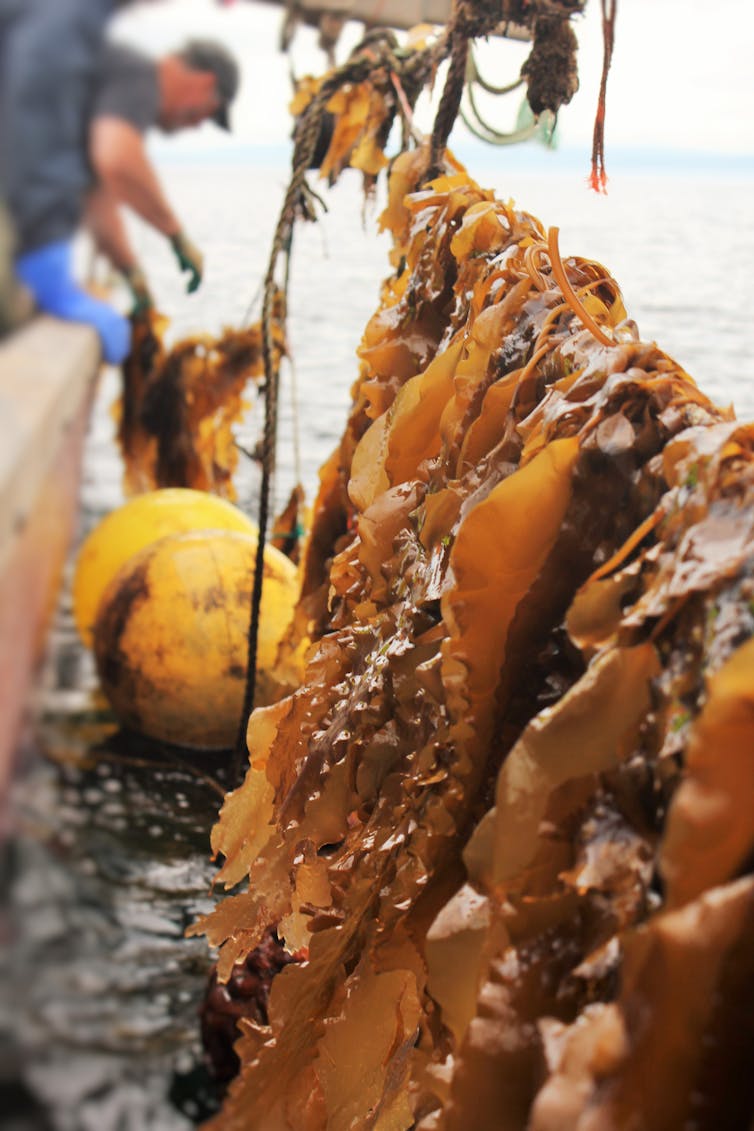
Algae can also release odours or reveal flavours associated with volatile organic compounds. There are common descriptions of seaweed aromas (marine, sulfur, vegetable, woody, spicy), which are associated with multiple compounds. As sensory characteristics are linked to consumer acceptance of a food, many studies are exploring the flavours of algae, and the impact of their inclusion in a diet.
Dashi made with Québec seaweed
One of the most famous seaweed dishes is a Japanese specialty called dashi, which is a soup broth made from Japanese kombu seaweed.
Dashi is a very good representative of the umami taste as its cooking process results in the extraction of a large amount of glutamate. In our research to produce a Québec dashi, we selected two seaweeds because of their history of consumption, availability and culinary interest: red dulse (sea bacon) and brown royal kombu (sea lasagna).
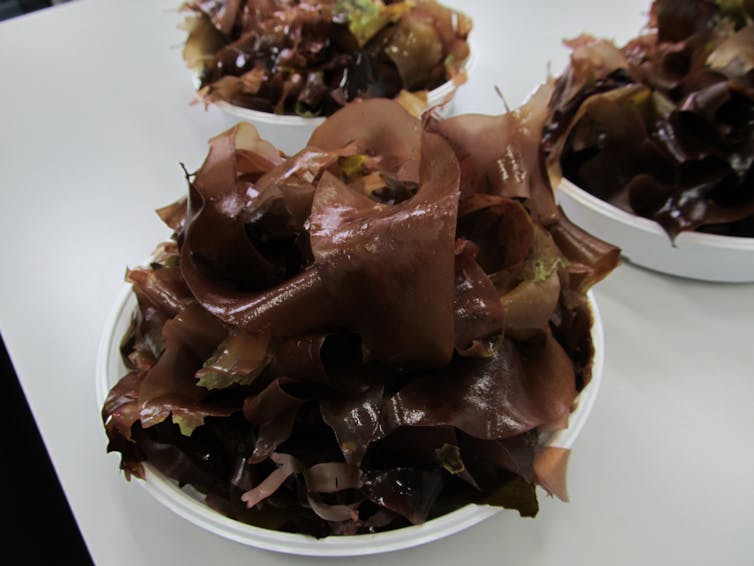
Broth production was monitored at different temperatures and cooking times. It was analyzed for its chemical composition (minerals, proteins and carbohydrates) as well as for its sensory physico-chemical sensory characteristics (color, texture, umami compounds and volatile organic compounds).
Results showed that algae nutrients were preserved in the broths. Those made from sea lasagna were more colourful, richer in minerals, and had salty, marine and vegetable flavours.
The dulse broths were thicker with a higher amount of carbohydrates, and had sweet, fruity, herbaceous aromas, and an interesting umami flavour potential.
Dulse is therefore the seaweed that produced a dashi that was more diverse in aromas and rich in umami flavours.
Consumers are intrigued by the idea of eating St. Lawrence seaweed and are curious to learn more about its origin. Seaweed can thus earn a place on menus, and in the future could have an even bigger presence in our daily meals.
Lucie Beaulieu is the director of the interest group on marine products and co-products of the Institute of Nutrition and Functional Foods (INAF) and director of the theme - Resources and Sustainable Maritime Economy of the Réseau Québec Maritime (RQM). She has received funding from the Natural Sciences and Engineering Research Council of Canada (NSERC), the Fonds de recherche du Québec - Nature et technologie (FRQNT), the Consortium de recherche et innovations en bioprocédés industriels au Québec (CRIBIQ), the Consortium de Recherche, en Innovation et en Transformation Alimentaire (RITA), MITACS, the North Sentinel program the RFI Food for tomorrow - Cap Aliments program, the Institut France-Québec maritime (IFQM), several provincial and federal ministries (Ministère de l'Agriculture, des Pêcheries et de l'Alimentation, Ministère de l'Économie et de l'Innovation, Ministère des Relations Internationales, Fonds des Pêches du Québec, Conseil National de Recherche du Canada)
This article was originally published on The Conversation. Read the original article.







